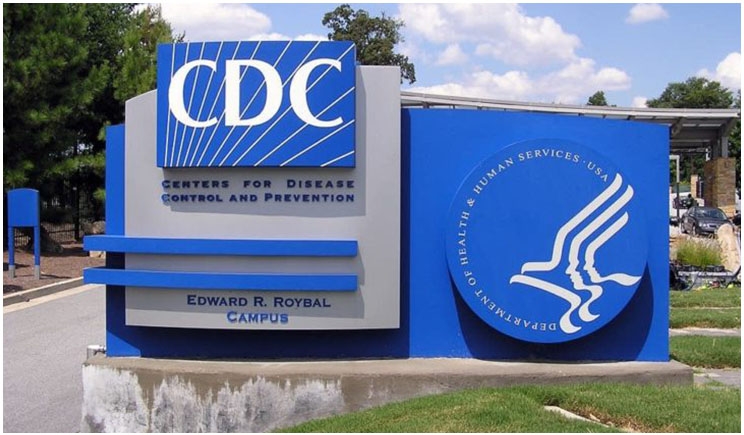
The Centers for Disease Control and Prevention (CDC) has released its Interim Infection Prevention and Control Guidance for Dental Settings During the COVID-19 Response. Its second paragraph caught my eye:
“The practice of dentistry involves the use of rotary dental and surgical instruments (e.g., handpieces or ultrasonic scalers) and air-water syringes. These instruments create a visible spray that contains large particle droplets of water, saliva, blood, microorganisms, and other debris. This spatter travels only a short distance and settles out quickly, landing on the floor, nearby operatory surfaces, dental health care personnel (DHCP), or the patient. The spray also might contain certain aerosols.”
For me, it’s déjà vu.
The First Guidelines
In 1986, the CDC published its first guidelines for infection control in dentistry after releasing guidance for healthcare workers and workplaces in response to the HIV/AIDS epidemic. As the first author of those guidelines, I dealt with timelines and short turnarounds for review prior to their publication.
With multiple comments to review and either reject or accept, I had to justify any changes with my boss, who lived in Washington, DC, and only worked half-time for the CDC in Atlanta.
Many experts inside and outside of the CDC served as reviewers, even before it had its Emergency Operations Center to coordinate responses to outbreaks like Ebola, prior to final submission of these guidelines for publication in the CDC’s Morbidity and Mortality Weekly Report (MMWR).
These experts came from multiple disciplines, including environmental microbiologists, dentists from the Department of Defense, epidemiologists, hospital infection control nurses, practicing dentists, and public health dentists. Many organizations also contributed reviewers, such as the ADA, which took the scientific lead.
Based on science, there was no disagreement about the use of gloves among our reviewers. The data that I had collected from states showed that only 17% of dentists wore gloves. With the work of key partners and our public health colleagues, at least 89% of dentists were wearing gloves by 1988. I received a US Public Health Service medal for this accomplishment.
But despite agreement on the use of gloves, masks, and eyewear, there was disagreement on other items, as well as vehement discussions. As the only full-time dentist working in the dental program at the CDC in Atlanta, I knew we should do something about the aerosols that we generated.
I argued for sterilization of handpieces and the safety of dental unit waterlines. With a bloodborne infection like hepatitis B or HIV/AIDS, these precautions would help prevent transmission, along with the use of masks and protective eyewear. I won those arguments.
One battle that I lost was protection from aerosols in the dental setting. With me was one person, Dr. James Crawford, of the University of North Carolina. Dr. Crawford had a wonderful slide set simulating the aerosols generated on a dental manikin with colored water produced by a typical routine dental procedure. Called “If Saliva Were Red,” the slide set was compelling.
While writing those first CDC guidelines, I also received data from the Department of Defense about the generation of aerosols as well as data from the National Institute for Occupational Safety and Health in a brown paper envelope that is still in my attic without a return address or identification. It was unpublished data, documenting microorganisms in aerosols generated in dental settings and environmental microbiological studies.
Today’s Challenges
Fast forward to 2020. The new CDC guidelines finally address the battle I lost in 1986 with the words “protection against developing and ongoing airborne assaults.”
Unfortunately, science gets partial answers slowly. With the threat of airborne infection, not bloodborne infections, dental personnel must limit aerosols and the virus that causes COVID-19, SARS-CoV2.
Slowly but surely, we are getting there. Now we must address practices to protect ourselves and our patients from aerosols. Thank goodness teledentistry can help us with the CDC’s recommendation for an extension of “several more weeks” for seeing only emergency and non-urgent patients in dental settings, putting a moratorium on all but urgent procedures that will emit aerosols. What’s more, the very nature of remote triage and virtual consultations further mitigate the risk of coronavirus infection for patients and practitioners alike.
Do we need to now wear respirators and fluid-resistant gowns and also limit aerosol generation? More on that later. The interim guidelines from the CDC and the recently released Occupational Safety and Health Administration (OSHA) Guidance on Preparing Workplaces for COVID-19 are clues that final guidelines will address aerosols. The OSHA guidance lists dental procedures among very high-risk and high-risk activities.
Expect final and more detailed guidance from the CDC in the coming months. I’m not sure how the CDC will respond to the Centers for Medicare & Medicaid Services statement of March 18: “Dentistry has one of the highest risks of transmission due to the close proximity of the healthcare provider to the patient.” However, I do know that it will be part of the background material reviewed.
Dr. Crawford, you and I were right many years ago. It took COVID-19 and its terrible toll on our country, and many countries around the world, for the dental profession to address aerosols. Now, we must work with key partners to ensure that we and our patients are protected from the byproduct of our profession’s most common procedures.
Dr. Scarlett is an infectious and chronic disease prevention specialist, dentist, and author. For 30 years, she has provided expert guidance on infectious diseases and infection control as a consultant to the Centers for Disease Control and Prevention, the World Health Organization, the Pan American Health Organization, the United States Agency for International Development, the American Red Cross, and many consumer health companies.
Related Articles
CDC Updates Interim Infection Control Guidelines Again
California Updates Guidelines for Treating Patients Who Have COVID-19
ADA Updates PPE Guidelines as States Prepare to Reopen











